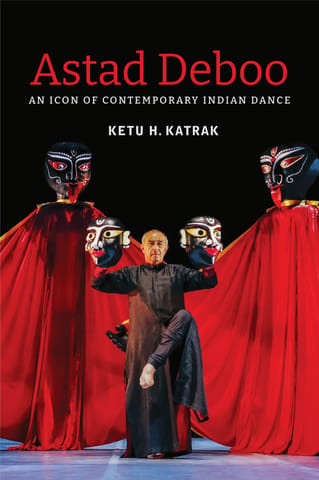- Contemporary Fiction
- Contemporary Fiction
- Children
- Children
- Comics & Graphic Novels
- Comics & Graphic Novels
- Non-Fiction
- Non-Fiction
- Fiction
- Fiction
Katsushika Hokusai’s Thirty-Six Views of Mount Fuji and the three volumes of his subsequent One Hundred Views of Mount Fuji show his fascination with a single motif: Mount Fuji. Hokusai’s near-obsession with Fuji was part of his hankering after artistic immortality. In Buddhist and Daoist tradition, this mountain was thought to hold the secret to eternal life, as one popular interpretation of its name suggests: fu-shi (“not death”).
Thirty-Six Views of Mount Fuji was produced from 1830 to 1832, when Hokusai was in his seventies and at the height of his career. Among the prints are three of the artist’s most famous: The Great Wave of Kanagawa; Fine Wind, Clear Morning; and Thunderstorm Beneath the Summit. By the time he created his second great tribute to Mount Fuji, three volumes comprising One Hundred Views of Mount Fuji, he was using the artist names “Gakyo Rojin” (“old man crazy for painting”) and “Manji” (“ten thousand things” or “everything”). Contrasting the mountain’s steadfastness and solidity with the changing world around it, Hokusai depicts Fuji through different seasons, weather conditions, and settings, and in so doing communicates an important message: while life changes, Fuji stands still.
Including all illustrations from these two masterful series, Hokusai’s Fuji also features many of Hokusai’s earlier renditions of the mountain, as well as later paintings. In this way, through Mount Fuji, this volume traces a history of Hokusai’s oeuvre.
About the Author
Kyoko Wada is an art writer, critic, and historian of Japanese culture.
- Home
- Non-Fiction
- Hokusais Fuji
Hokusais Fuji
SIZE GUIDE
- ISBN: 9780500026557
- Author: Katsushika Hokusai Kyoko Wada
- Publisher: Thames And Hudson
- Pages: 416
- Format: Hardback
Book Description
Katsushika Hokusai’s Thirty-Six Views of Mount Fuji and the three volumes of his subsequent One Hundred Views of Mount Fuji show his fascination with a single motif: Mount Fuji. Hokusai’s near-obsession with Fuji was part of his hankering after artistic immortality. In Buddhist and Daoist tradition, this mountain was thought to hold the secret to eternal life, as one popular interpretation of its name suggests: fu-shi (“not death”).
Thirty-Six Views of Mount Fuji was produced from 1830 to 1832, when Hokusai was in his seventies and at the height of his career. Among the prints are three of the artist’s most famous: The Great Wave of Kanagawa; Fine Wind, Clear Morning; and Thunderstorm Beneath the Summit. By the time he created his second great tribute to Mount Fuji, three volumes comprising One Hundred Views of Mount Fuji, he was using the artist names “Gakyo Rojin” (“old man crazy for painting”) and “Manji” (“ten thousand things” or “everything”). Contrasting the mountain’s steadfastness and solidity with the changing world around it, Hokusai depicts Fuji through different seasons, weather conditions, and settings, and in so doing communicates an important message: while life changes, Fuji stands still.
Including all illustrations from these two masterful series, Hokusai’s Fuji also features many of Hokusai’s earlier renditions of the mountain, as well as later paintings. In this way, through Mount Fuji, this volume traces a history of Hokusai’s oeuvre.
About the Author
Kyoko Wada is an art writer, critic, and historian of Japanese culture.
User reviews
NEWSLETTER
Subscribe to get Email Updates!
Thanks for subscribing.
Your response has been recorded.

India's Iconic & Independent Book Store offering a vast selection of books across a variety of genres Since 1978.
"We Believe In The Power of Books" Our mission is to make books accessible to everyone, and to cultivate a culture of reading and learning. We strive to provide a wide range of books, from classic literature, sci-fi and fantasy, to graphic novels, biographies and self-help books, so that everyone can find something to read.
Whether you’re looking for your next great read, a gift for someone special, or just browsing, Midland is here to make your book-buying experience easy and enjoyable.
We are shipping pan India and across the world.
For Bulk Order / Corporate Gifting
 +91 9818282497 |
+91 9818282497 |  [email protected]
[email protected]
Click To Know More
INFORMATION
ACCOUNT
QUICK LINKS
ADDRESS
Shop No.20, Aurobindo Palace Market, Near Church, New Delhi














